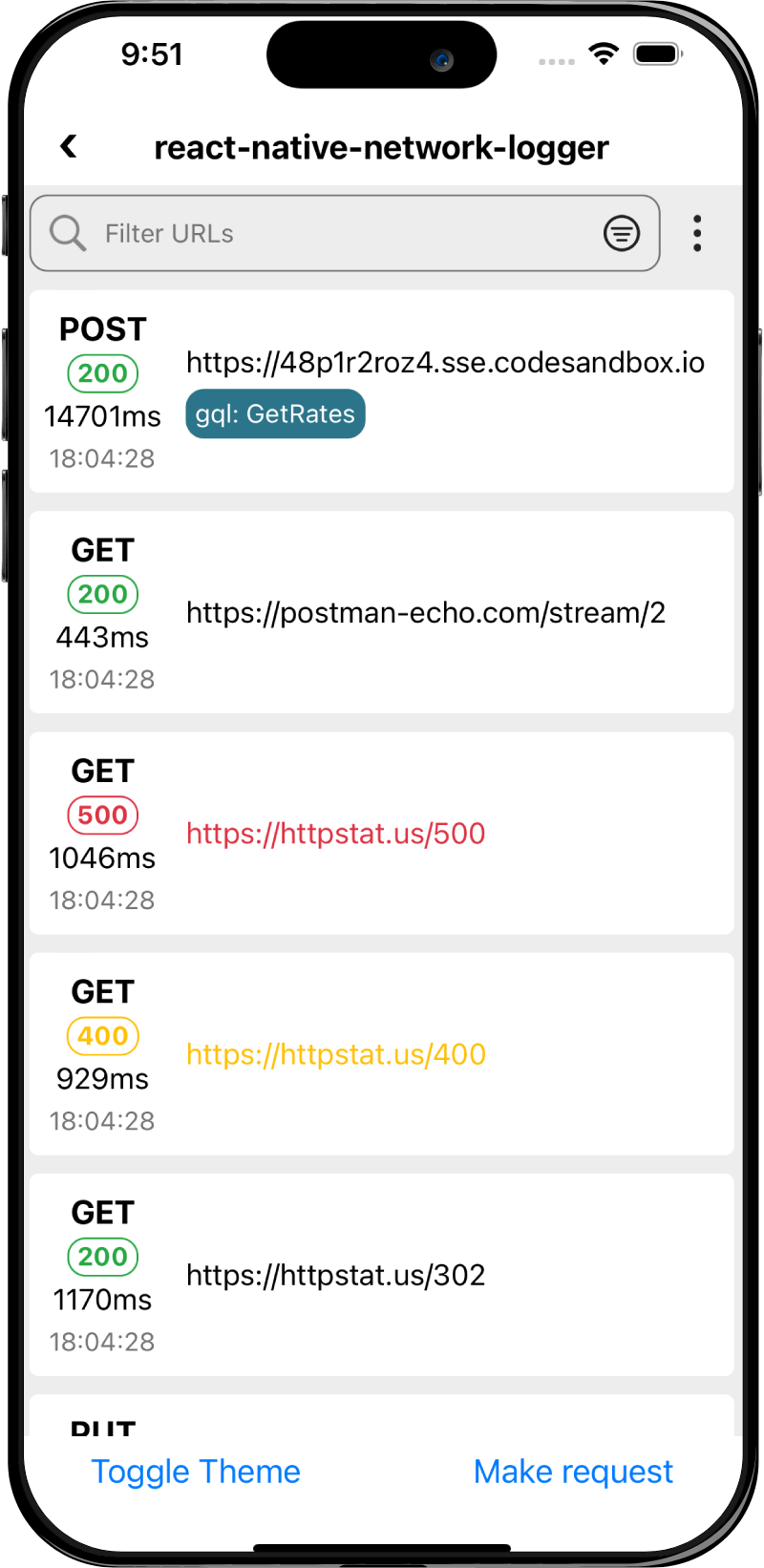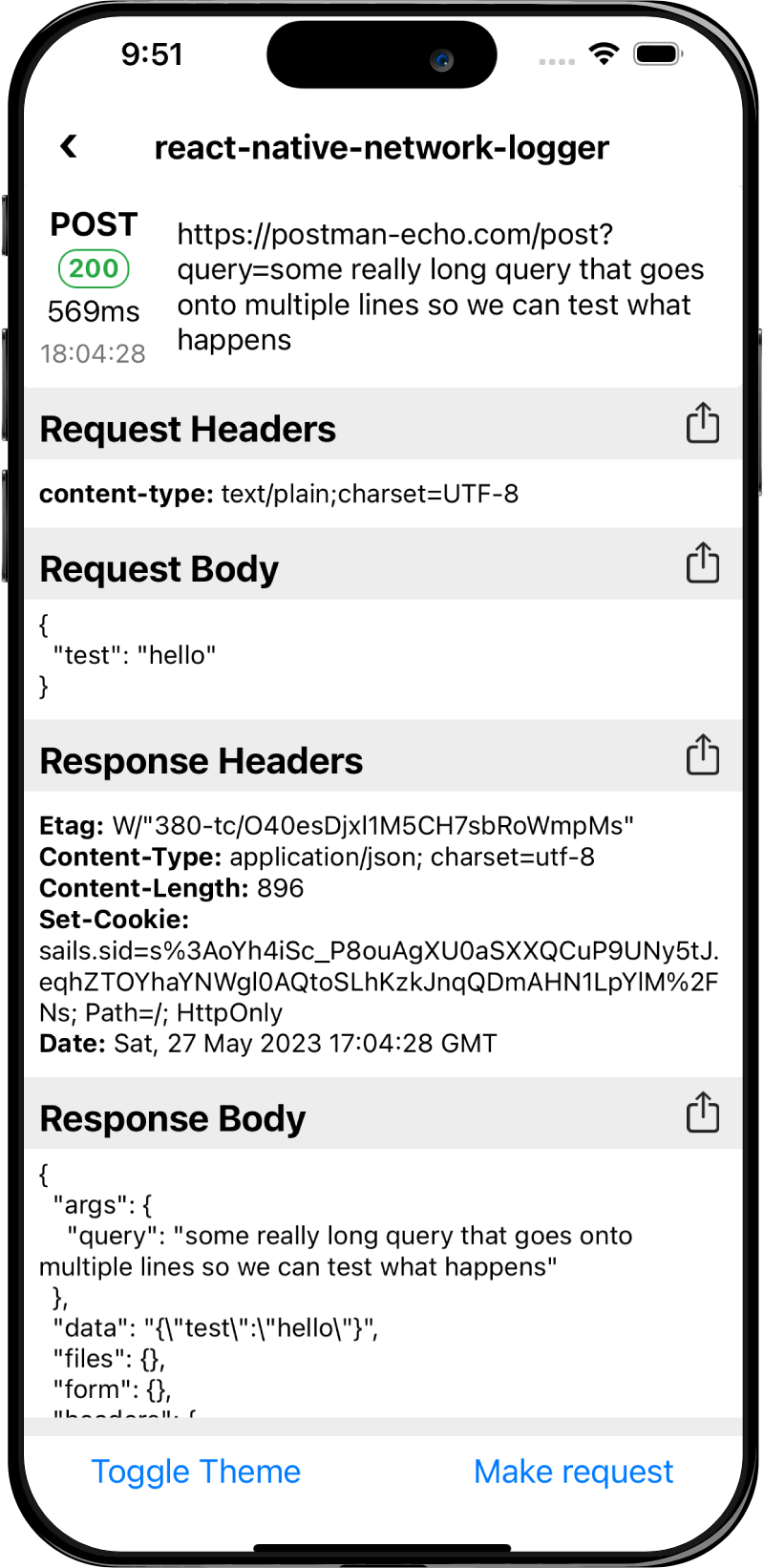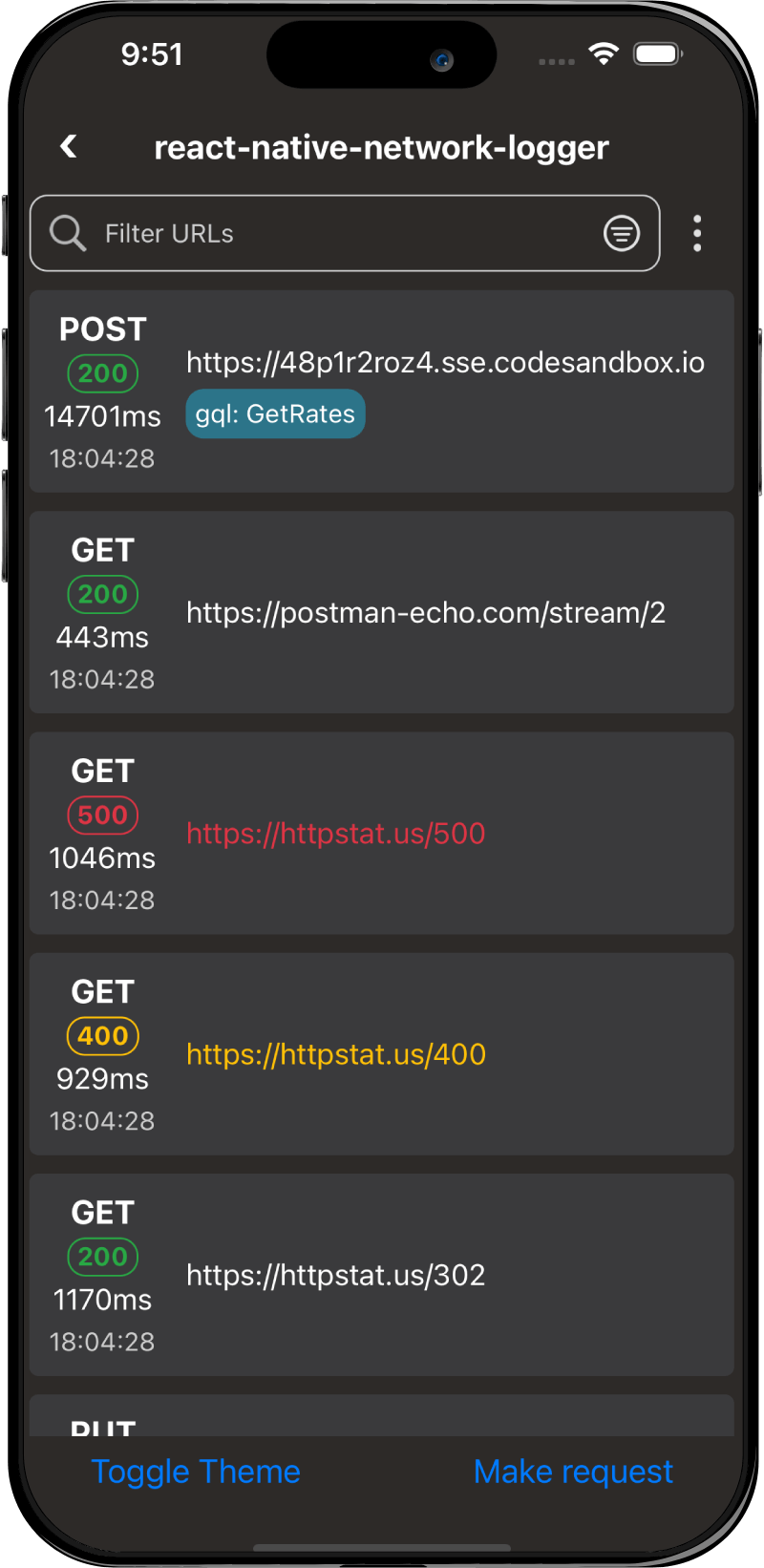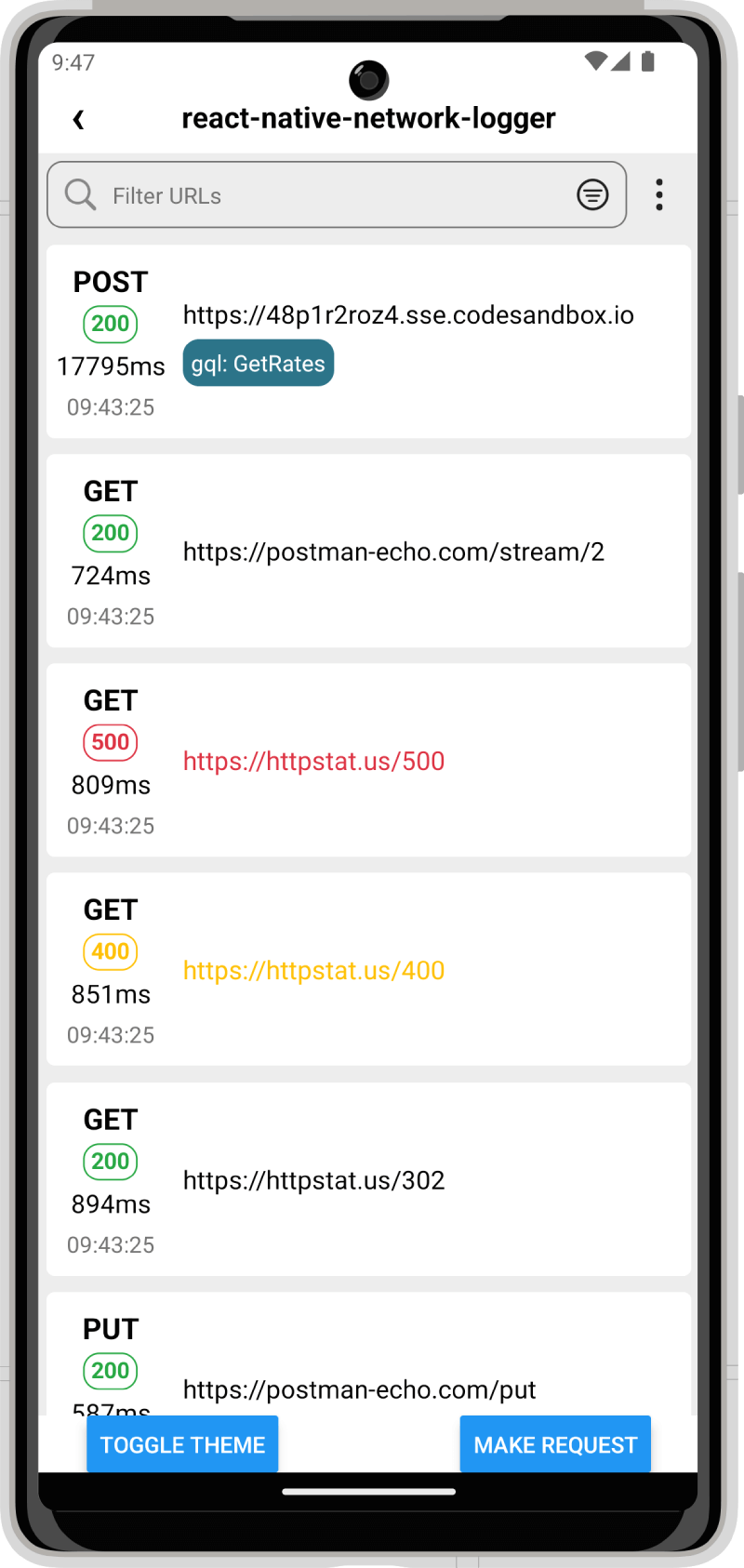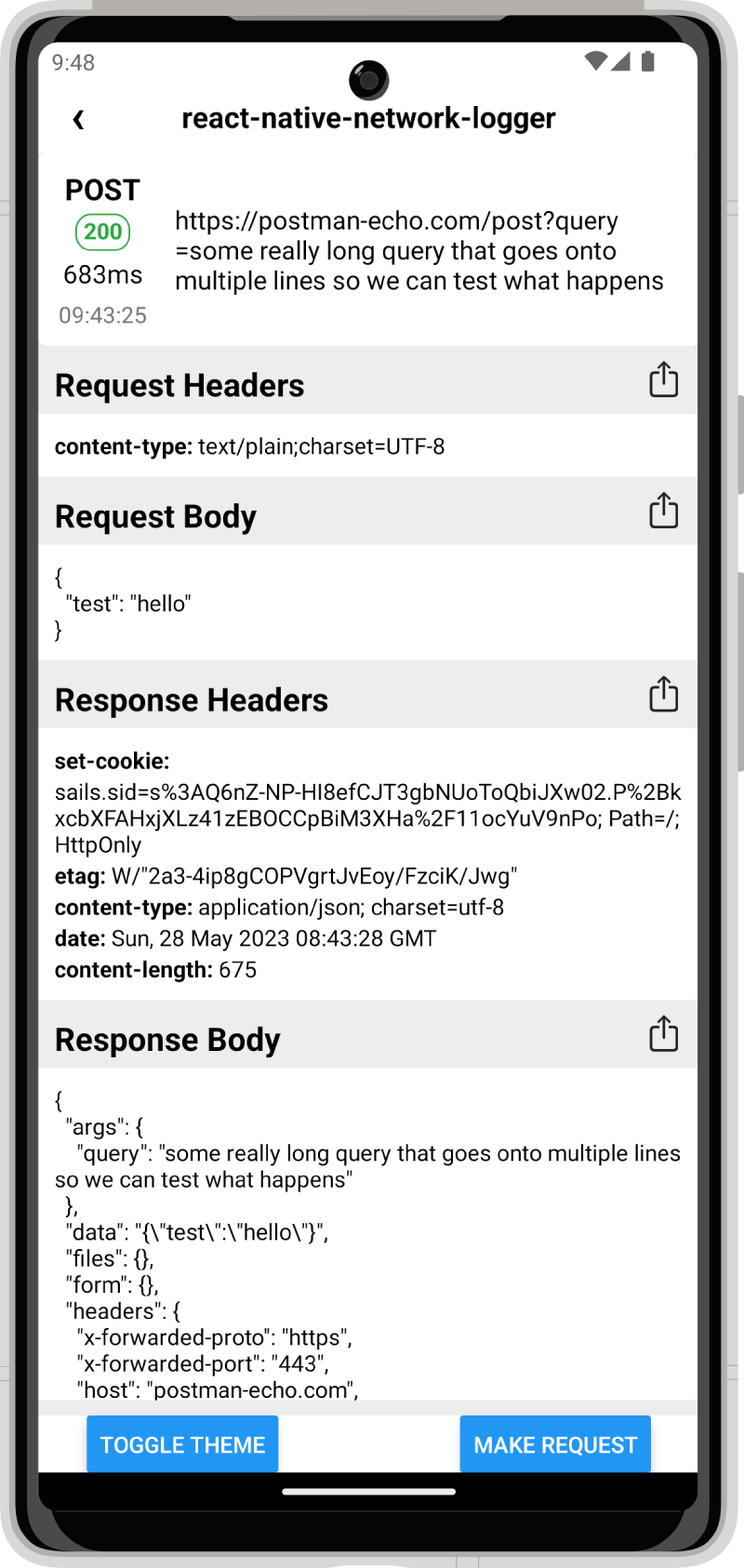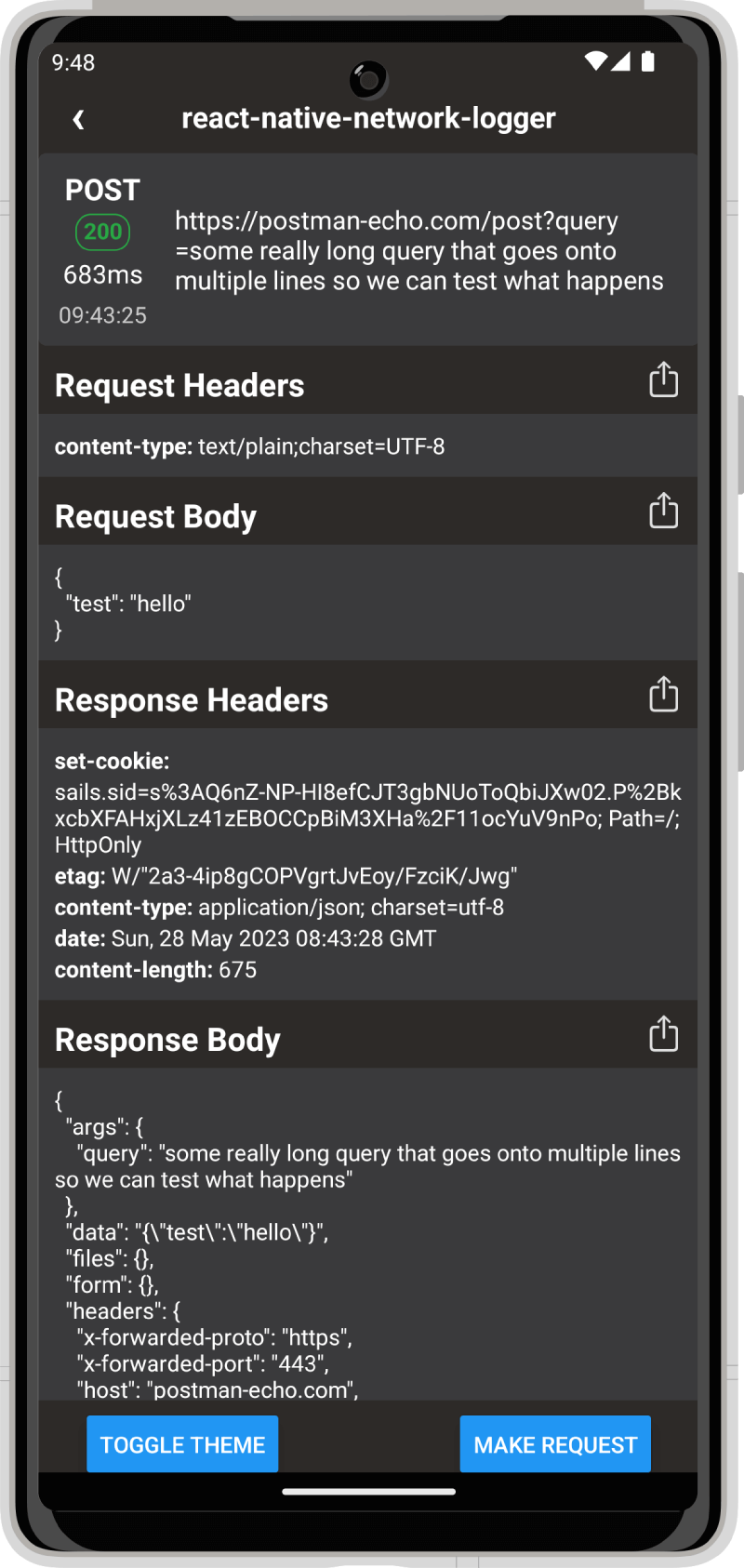An HTTP traffic monitor for React Native including in app interface.
An alternative to Wormholy but for both iOS and Android and with zero native dependencies.
- Log networks requests on iOS and Android
- View network requests made with in app viewer
- Debug network requests on release builds
- Individually view request/response headers and body
- Copy or share headers, body or full request
- Share cURL representation of request
- Zero native or JavaScript dependencies
- Built in TypeScript definitions
yarn add react-native-network-loggeror
npm install --save react-native-network-logger
Call startNetworkLogging in your apps entry point to log every request, or call it on a button press to manually trigger it.
import { startNetworkLogging } from 'react-native-network-logger';
startNetworkLogging();
AppRegistry.registerComponent('App', () => App);import NetworkLogger from 'react-native-network-logger';
const MyScreen = () => <NetworkLogger />;You can change between the dark and light theme by passing the theme prop with "dark" or "light".
import NetworkLogger from 'react-native-network-logger';
const MyScreen = () => <NetworkLogger theme="dark" />;You can configure the max number of requests stored on the device using by calling startNetworkLogging with the maxRequests option. The default is 500.
startNetworkLogging({ maxRequests: 500 });Set the sort order of requests. Options are asc or desc, default is desc (most recent at the top).
import NetworkLogger from 'react-native-network-logger';
const MyScreen = () => <NetworkLogger sort="asc" />;Use your existing back button (e.g. in your navigation header) to navigate within the network logger.
import NetworkLogger, { getBackHandler } from 'react-native-network-logger';
const navigation = useNavigation();
const onBack = getBackHandler(navigation.goBack);
const MyScreen = () => (
<Screen onBackPressed={onBack}>
<NetworkLogger />
</Screen>
);To test the example app, after cloning the repo, install the required dependencies by running:
yarn bootstrapThen start the example app by running:
yarn example startYou should then be able to open the expo server at http://localhost:3000/ and launch the app on iOS or Android.
For more setup and development details, see Contributing.
Please read CONTRIBUTING.md for details on our code of conduct, and the process for submitting pull requests.
This project is licensed under the MIT License - see the LICENSE file for details.







